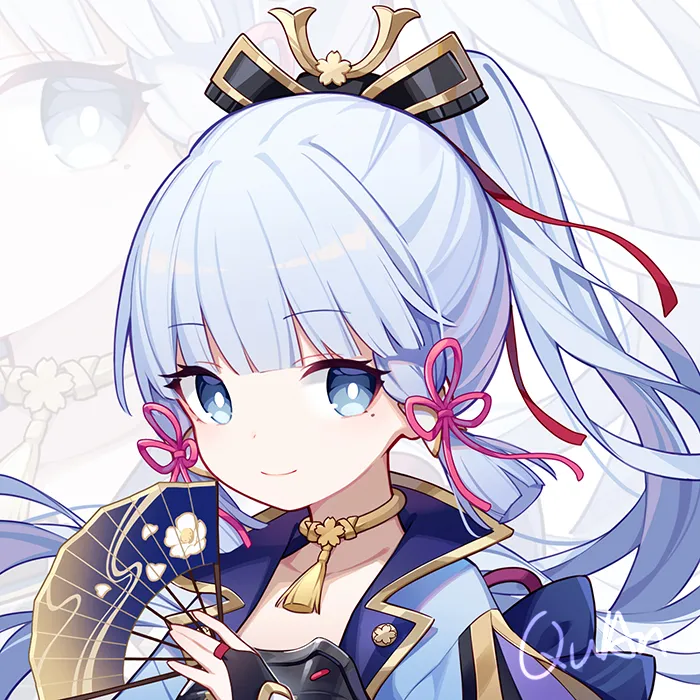通知
通知
一个通知是可以显示到你的应用程序的正常UI的用户之外的消息。当您告诉系统发出通知时,它首先在通知区域中显示为图标。要查看通知的详细信息,用户可以打开通知抽屉。通知区域和通知抽屉都是用户可以随时查看的系统控制区域。
Android Toast类提供了一种方便的方式来向用户显示警报,但问题是这些警报不是持久性的,这意味着警报在屏幕上闪烁几秒钟然后消失。
要查看通知的详细信息,您将必须选择图标,该图标将显示包含有关通知的详细信息的通知面板。在虚拟设备上使用模拟器时,您必须单击屏幕顶部并向下拖动状态栏以展开它,这将为您提供以下详细信息。这将只有64 dp高,称为正常视图。
创建和发送通知
您可以通过简单的方法来创建通知。在您的应用程序中按照以下步骤创建通知
第1步-创建通知生成器
第一步是使用 Notification.Builder()创建一个通知生成器。您将使用Notification Builder设置各种Notification属性,例如其大小图标,标题,优先级等。
Notification.Builder builder = new Notification.Builder(this);
第2步-设置通知属性
拥有Builder对象后,可以根据需要使用Builder对象设置其Notification属性。但这是强制性的,至少应设置-
- 一个小图标,由**setSmallIcon()**设置
- 标题,由**setContentTitle()**设置
- 详细信息文本,由**setContentText()**设置
- .............
builder.setContentInfo("内容信息")
.setContentText("通知内容")//设置通知内容
.setContentTitle("通知标题")//设置通知标题
.setLargeIcon(BitmapFactory.decodeResource(getResources(),R.mipmap.ic_launcher))
.setSmallIcon(R.mipmap.ic_launcher_round)//不能缺少的一个属性
.setSubText("Subtext")
.setTicker("滚动消息......")
.setWhen(System.currentTimeMillis());//设置通知时间,默认为系统发出通知的时间,通常不用设置
您有很多可选属性,可以为通知设置。要了解有关它们的更多信息,请参阅Notification.Builder的参考文档。
步骤3-发出通知
最后,通过调用NotificationManager.notify()发送通知,将Notification对象传递给系统。通知它之前,请确保对构建器对象调用NotificationCompat.Builder.build()方法。此方法合并所有已设置的选项,并返回一个新的Notification对象。
Notification n = builder.build();
//3、manager.notify()
manager.notify(NOTIFICATION_ID,n);
NotificationCompat.Builder类
NotificationCompat.Builder类可让您更轻松地控制所有标志,并有助于构造典型的通知布局。以下是一些作为NotificationCompat.Builder类的一部分可用的重要且最常用的方法。
| 方法 | 说明 |
|---|---|
| Notification build() | 合并所有已设置的选项,并返回一个新的Notification对象。 |
| NotificationCompat.Builder setAutoCancel (boolean autoCancel) | 设置此标志将使其生效,因此当用户在面板中单击它时,通知将自动取消。 |
| NotificationCompat.Builder setContent (RemoteViews views) | 提供自定义的RemoteViews代替标准的RemoteViews使用。 |
| NotificationCompat.Builder setContentInfo (CharSequence info) | 在通知的右侧设置大文本。 |
| NotificationCompat.Builder setContentIntent (PendingIntent intent) | 提供单击通知时发送的PendingIntent。 |
| NotificationCompat.Builder setContentText (CharSequence text) | 在标准通知中设置通知的文本(第二行)。 |
| NotificationCompat.Builder setContentTitle (CharSequence title) | 在标准通知中设置通知的文本(第一行)。 |
| NotificationCompat.Builder setDefaults (int defaults) | 设置将使用的默认通知选项。 |
| NotificationCompat.Builder setLargeIcon (Bitmap icon) | 设置股票消息和通知中显示的大图标。 |
| NotificationCompat.Builder setNumber (int number) | 在通知的右侧设置较大的数字。 |
| NotificationCompat.Builder setOngoing (boolean ongoing) | 设置这是否是正在进行的通知。 |
| NotificationCompat.Builder setSmallIcon (int icon) | 设置要在通知布局中使用的小图标。 |
| NotificationCompat.Builder setStyle (NotificationCompat.Style style) | 添加丰富的通知样式以在构建时应用。 |
| NotificationCompat.Builder setTicker (CharSequence tickerText) | 设置第一次到达通知时在状态栏中显示的文本。 |
| NotificationCompat.Builder setVibrate (long[] pattern) | 设置要使用的振动模式。 |
| NotificationCompat.Builder setWhen (long when) | 设置事件发生的时间。面板中的通知此时已排序。 |
通知示例演示
- 您将使用Android Studio IDE创建一个Android应用程序,并在com.example.demo包下将其命名为Demo。
- 修改src/MainActivity.java文件并添加一些组件
- 修改布局XML文件res/layout/activity_main.xml来定义一个界面。
- 运行该应用程序以启动Android模拟器并验证在该应用程序中所做更改的结果。
以下是修改后的主要活动文件src/com.jc2182.demo/MainActivity.java的内容。该文件可以包括每个基本生命周期方法。
package com.jc2182.demo;
import android.app.Activity;
import android.app.Notification;
import android.app.NotificationChannel;
import android.app.NotificationManager;
import android.content.Context;
import android.graphics.BitmapFactory;
import android.graphics.Color;
import android.os.Bundle;
import android.view.View;
import android.widget.Button;
public class MainActivity extends Activity {
private static final int NOTIFICATION_ID = 1;
Button b1;
@Override
protected void onCreate(Bundle savedInstanceState) {
super.onCreate(savedInstanceState);
setContentView(R.layout.activity_main);
b1 = (Button)findViewById(R.id.button);
b1.setOnClickListener(new View.OnClickListener() {
@Override
public void onClick(View v) {
addNotification();
}
});
}
private void addNotification() {
//1、NotificationManager
NotificationManager manager = (NotificationManager)getSystemService(Context.NOTIFICATION_SERVICE);
/** 2、Builder->Notification * 必要属性有三项 * 小图标,通过 setSmallIcon() 方法设置 * 标题,通过 setContentTitle() 方法设置 * 内容,通过 setContentText() 方法设置*/
Notification.Builder builder = new Notification.Builder(this);
builder.setContentInfo("内容信息")
.setContentText("通知内容")//设置通知内容
.setContentTitle("通知标题")//设置通知标题
.setLargeIcon(BitmapFactory.decodeResource(getResources(),R.mipmap.ic_launcher))
.setSmallIcon(R.mipmap.ic_launcher_round)//不能缺少的一个属性
.setSubText("Subtext")
.setTicker("滚动消息......")
.setWhen(System.currentTimeMillis());//设置通知时间,默认为系统发出通知的时间,通常不用设置
if (android.os.Build.VERSION.SDK_INT >= android.os.Build.VERSION_CODES.O) { // 这里的判断是为了兼容更高版本的API (O // 26)
NotificationChannel channel = new NotificationChannel("001","my_channel",NotificationManager.IMPORTANCE_DEFAULT);
channel.enableLights(true); //是否在桌面icon右上角展示小红点
channel.setLightColor(Color.GREEN); //小红点颜色
channel.setShowBadge(true); //是否在久按桌面图标时显示此渠道的通知
manager.createNotificationChannel(channel);
builder.setChannelId("001");
}
Notification n = builder.build();
//3、manager.notify()
manager.notify(NOTIFICATION_ID,n);
}
}
以下是res/layout/activity_main.xml文件的内容-
<RelativeLayout xmlns:android="http://schemas.android.com/apk/res/android"
xmlns:tools="http://schemas.android.com/tools"
android:layout_width="match_parent"
android:layout_height="match_parent"
tools:context="MainActivity">
<TextView
android:id="@+id/textView1"
android:layout_width="wrap_content"
android:layout_height="wrap_content"
android:text="通知示例"
android:layout_alignParentTop="true"
android:layout_centerHorizontal="true"
android:textSize="30sp" />
<TextView
android:id="@+id/textView2"
android:layout_width="wrap_content"
android:layout_height="wrap_content"
android:text="蝴蝶教程"
android:textColor="#ff87ff09"
android:textSize="30sp"
android:layout_below="@+id/textView1"
android:layout_centerHorizontal="true"
android:layout_marginTop="48dp" />
<ImageButton
android:layout_width="wrap_content"
android:layout_height="wrap_content"
android:id="@+id/imageButton"
android:src="@drawable/logo"
android:layout_below="@+id/textView2"
android:layout_centerHorizontal="true"
android:layout_marginTop="42dp" />
<Button
android:id="@+id/button"
android:layout_width="69dp"
android:layout_height="wrap_content"
android:layout_below="@+id/imageButton"
android:layout_centerHorizontal="true"
android:layout_marginTop="62dp"
android:text="通知" />
</RelativeLayout>
让我们尝试运行刚刚修改的应用程序。我假设您在进行环境设置时已创建了AVD。要从Android Studio运行该应用,请打开您项目的活动文件之一,然后工具栏中单击“运行”图标。Android studio将应用程序安装在您的AVD上并启动它,如果设置和应用程序一切正常,它将显示在“模拟器”窗口下面-

点击“通知”按钮,从屏幕顶部下拉即可看到刚刚发送的通知。
